Learn about Charlestown’s rapid transformation resulting from the WWII smokeless powder plant in Part I.
_________________________________________
Employment of women and African Americans at the Charlestown smokeless powder ordnance facility, groups that often faced exclusion or discrimination in the workplace, contributed to the plant’s nationally-recognized production accomplishments.
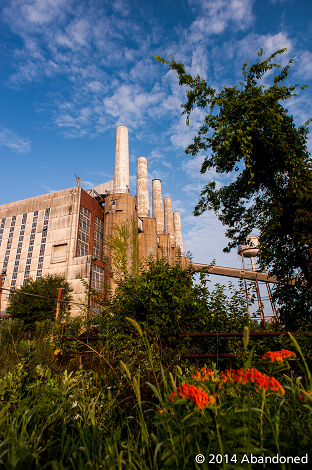
WWII defense needs quickly brought women into the labor force, particularly later in the war as men left factories to enter into combat. The New York Times reported on October 19, 1941 that “entry of women into the defense factories of the nation is something that is just beginning on a considerable scale . . . now they are utilized for a wide variety of tasks by at least nineteen large plants.” The article asserted that women surpassed male workers in “finger dexterity” and “powers of observation” and possessed “superior traits in number memory,” completing tasks like painting planes, covering oil lines and packing powder bags. The article also reported that thousands of women had begun to produce smokeless powder at plants in Indiana, Alabama and Virginia and that “care is taken to select only women who are emotionally stable for these hazardous tasks.”
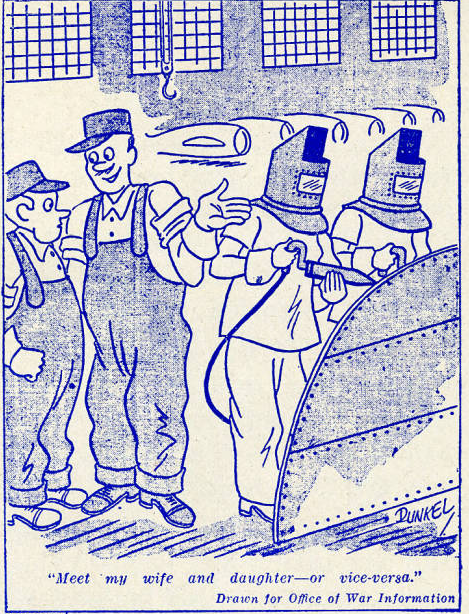
As with the nation, Indiana began employing women en masse at munitions factories and by 1944 the Indianapolis Star reported that while industrial work was once considered “unsuitable for women . . . this view has been abandoned since employers have found that women can and have been willing to adjust themselves to practically any type of labor if given the opportunity.”
Women were hired in large numbers at Charlestown’s ordnance facility and, while originally serving as mail runners and lab technicians, they eventually replaced men as powder cutting machine attendants. The bag-loading plant known as HOP employed 3,200 workers by December 1941, most of whom were women, who sewed bags and packed them with powder. By 1942, so many women worked at the Charlestown plants that the town had to rapidly expand child care facilities, enlarging the community center nursery at Pleasant Ridge Project.
In addition to child care, transportation proved an obstacle to women hoping to enter Charlestown’s workforce. The Charlestown Courier reported that women were prohibited from riding the “four special trains bringing employes to the Powder Plant. They have to find some other way to get to their jobs here.” Additionally, the New York Times reported that women working industrial jobs made “only about 60 percent of that of men doing comparable work.”
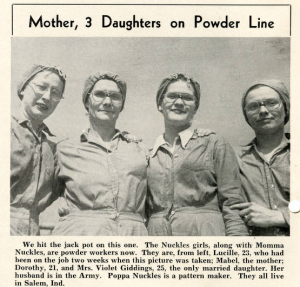
“Trailer wives” in Charlestown felt they too contributed to defense efforts by relocating their families to ordnance towns where their husbands found employment. The Indianapolis Star described these women as a “gallant band who ‘follow construction’ in order to keep the family life being lived as a unit and not subject themselves and their husbands to the hardships of separation.”
Much like women in WWII, defense needs partially opened the labor force to African Americans. A questionnaire from the Indiana State Defense Council reported that from July 1, 1941 to July 1, 1942 those firms reporting African American employment experienced a net increase of 82% in the number of blacks employed. Initially African Americans worked at Charlestown’s smokeless powder plant primarily in janitorial and unskilled fields. However, by the end of 1942, due to a labor shortage, they found employment in various roles, such as chemists, plant laborers, and plant operators.
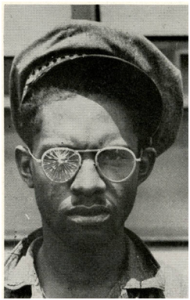
Former plant employees stated in interviews that they witnessed little or no segregation, but that separate restrooms may have existed at one time. However, housing and schooling for African Americans in Charlestown was segregated and often in poor condition. Due to protests by some white residents regarding mixed housing units, a section of 130 units were separated for black workers with a 300 foot wide area. A 1942 Louisville Courier-Journal article about the deplorable state of Clark County African-American schools, particularly in Charlestown Township, stated that grade school students:
were broken out in a rash of goose pimples yesterday morning as they shivered at their antiquated desks. . . . A not unbitter wind whistled thru broken window panes and thru cracks in the walls of the sixty-five year old frame building as twenty-three students . . . huddled together and with stiffened fingers signed up for a year of ‘education.’
The boom afforded limited employment opportunities for African Americans outside the plant, despite earlier employer prejudice, which often barred them from working at local Charlestown businesses.
In the spring of 1945, after deliberation by the Army, War Production Board, and union officials, approximately 1,000 German prisoners of war were transferred to Charlestown to supplement construction of the rocket powder plant (IOW2), the third WWII ordnance plant at the facility. The Charlestown Courier described the POWs:
“Far from supermen, the German POWs employed on the Rocket Plant are predominantly youthful, many never having required a razor to date. They seem to be in good spirits and are healthy and husky. A surprisingly large number speak English and don’t hesitate to say they would rather remain in this country.”
The Indianapolis Star reported on August 19, 1945 that the POWs had left the plant and returned to Fort Knox and other camps where they were “obtained.” Newspapers located by IHB staff did not report on the POWs’ contributions, but Steve Gaither and Kimberly Kane state in their report on the facility that it was “doubtful that the POWs contributed directly to construction.”
The massive Charlestown ordnance facility produced more than one billion pounds of smokeless powder in World War II, nearly as much as the “total volume of military explosives made for the United States in World War I” (Indianapolis Star Magazine, 1948). Output levels were so high that the military nationally recognized the facility’s production and safety records, conferring upon the plant the Army-Navy “E” Award, awarded to only 5% of the estimated war plants in the country during WWII.
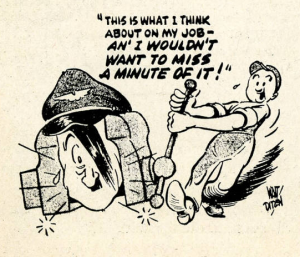
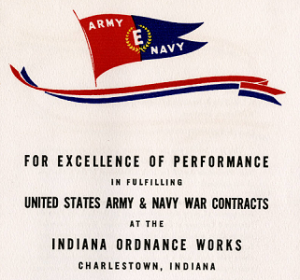
National munitions production wound down with termination of the two-front war, which concluded first on May 7, 1945 with German surrender and Japan’s informal agreement to surrender on August 14, 1945. The plants at Charlestown gradually reduced payroll in August before eventually shutting down. The Richmond Palladium noted that after reductions “scarcely a wheel turned, or a hammer fell. Now there are just a few thousand ‘running out’ the powder which was in process, and putting the whole installation in weather-tight conditions.”
The Indianapolis Star reported on August 19 of that year that Charlestown is “dying with the same gusto with which it was born.” The Richmond Palladium described Charlestown folding up “like an Arabian tent village,” as trailer caravans departed and workers returned to various states across the nation. Although the abrupt exodus shocked local residents, worried about maintaining their postwar economy, a trickle of new residents soon arrived, including veterans and their families. Boom town activity returned to Charlestown during the Korean and Vietnam wars when the ordnance facility again began producing powder, reuniting workers from the WWII era.
Charlestown’s 1940s ordnance plants illustrated how WWII energized local economies and afforded women and African Americans job opportunities. Accommodating the massive facility transformed Charlestown from a town to a city and led to its first sewage system,the resurfacing and improvement of miles of roads, and two major housing projects.
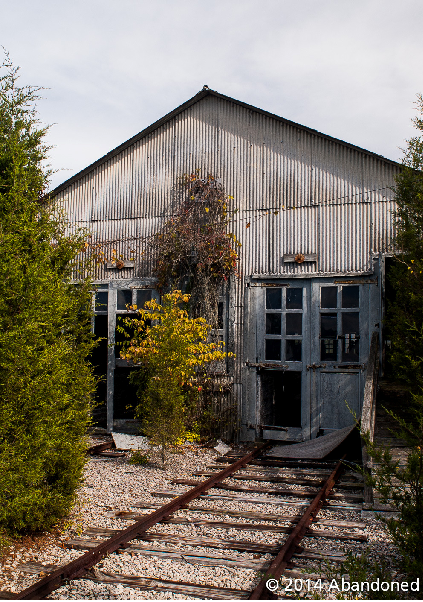
View stunning 21st-century photos of the Charleston facility, such as this Air Test House, via Abandoned: http://abandonedonline.net/locations/industry/indiana-ammunitions-depot/
